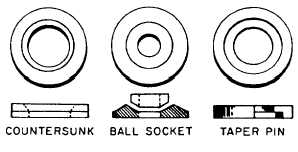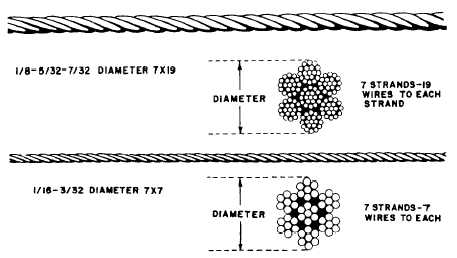Figure 2-31.—Various types of special washers.
CABLES
A cable is a group of wires or a group of strands of
wires twisted together into a strong wire rope. The
wires or strands may be twisted in various ways. The
relationship of the direction of twist of each strand to
each other and to the cable as a whole is called the lay.
The lay of the cable is an important factor in its
strength, for if the strands are twisted in a direction
opposite to the twist of the strands around the center
strand or core, the cable will not stretch (or set) as
much as one in which they are all twisted in the same
direction.
This direction of twist (in opposite
direction) is most commonly adopted, and it is called
a regular or an ordinary lay. Cables may have a right
regular lay or a left regular lay. If the strands are
twisted in the direction of twist around the center
strand or core, the lay is called a lang lay. There is a
right and left lang lay. The only other twist
arrangement-twisting the strands alternately right
and left, then twisting them all either to the right or to
the left about the core—is called a reverse lay. Most
aircraft cables have a right regular lay.
When aircraft cables are manufactured, each
strand is first formed to the spiral or helical shape to
fit the position it is to occupy in the finished cable.
The process of such forming is called preforming, and
cables made by such a process are said to be
preformed. The process of preforming is adopted to
ensure flexibility in the finished cable and to relieve
bending and twisting stresses in the strands as they are
woven into the cable. It also keeps the strands from
spreading when the cable is cut. All aircraft cables
are internally lubricated during construction.
Aircraft control cables are fabricated either from
flexible, preformed carbon steel wire or from flexible,
preformed, corrosion-resistant steel wire. The small
corrosion-resistant steel cables are made of steel
containing not less than 17 percent chromium and 8
percent nickel, while the larger ones (those of the
5/16-, 3/8-, and 7/16-inch diameters) are made of steel
that, in addition to the amounts of chromium and
nickel just mentioned, also contains not less than 1.75
percent molybdenum.
Cables may be designated 7 x 7, 7 x 19, or
6 x 19 according to their construction. A 7 x 7
cable consists of six strands of seven wires each, laid
around a center strand of seven wires. A 7 x 19
cable consists of six strands of 19 wires, laid around a
19-wire central strand,
A 6 x 19 IWRC cable
consists of six strands of 19 wires each, laid around an
independent wire rope center.
The size of cable is given in terms of diameter
measurement. A 1/8-inch cable or a 5/16-inch cable
means that the cable measures 1/8 inch or 5/16 inch in
diameter, as shown in figure 2-32. Note that the cable
diameter is that of the smallest circle that would
enclose the entire cross section of the cable. Aircraft
Figure 2-32.—Cable cross section.
2-23




